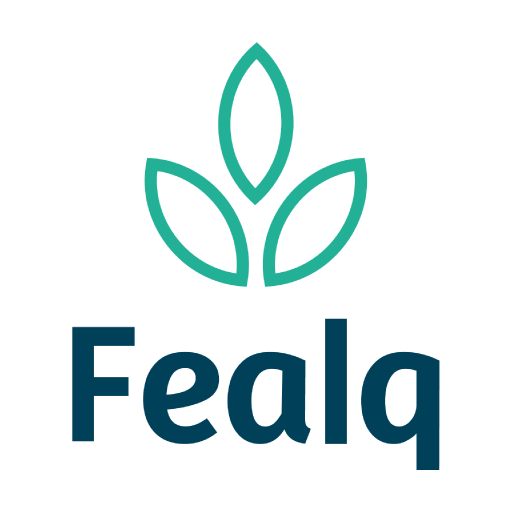Did you know that Brazilian forests are of fundamental importance in atmospheric carbon sequestration?
Brazil, which has diverse biomes such as the Amazon, the Cerrado and the Atlantic Forest, plays a crucial role in global climate regulation.
The Amazon, for example, is home to about three million species of plants and animals. However, accelerated deforestation threatens these ecosystems
In this context, forest restoration, including planted forests — such as eucalyptus (Eucalyptus spp.) — emerge as a solution. These areas collaborate with the mitigation of carbon emissions and restore degraded areas.
Forest systems can directly contribute to the UN’s Sustainable Development Goals (SDGs). In particular, they align with SDGs 15 (Life on Land) and 13 (Action against global climate change).
Let’s better understand how forest systems can help reverse the problems caused by deforestation.
Land Use Change and Greenhouse Gas (GHG) Emissions
According to the IPCC (2022), land use change is the largest source of greenhouse gas emissions in Brazil. With the conversion of native forests to agriculture being the highest rate.
Studies have shown that there is a link between climate change and deforestation in the Amazon. One of the reasons would be the lack of regulations on the protection of forest resources.
Following this unrestrained pace, deforestation in the Amazon could reach 56% by 2050. Taking into account that, between 2001 and 2022, Brazil lost 48% of its forest cover, releasing 17.9 Gt of CO₂ equivalent.
And it is important to consider that this forest loss not only releases stored carbon, but also reduces the capacity for climate resilience.
Forest Systems as a Carbon Sink – Eucalyptus
Eucalyptus, widely cultivated in Brazil for commercial purposes, also has high potential for carbon sequestration when properly managed. Studies indicate that:
- Eucalyptus forests can accumulate up to 80 t C ha⁻¹ in 6 years with variations depending on climate and soil.
- Coppice systems (regrowth of strains after cutting) accumulate more biomass and carbon than conventional plantations. Carbon stocks in roots can reach 17.7 Mg C ha⁻¹ in just five years.
- Modelling estimates carbon stocks between 26 and 288 t C ha⁻¹ in forest systems with eucalyptus, depending on edaphoclimatic conditions.
Eucalyptus as a Strategy for Restoration
The restoration of degraded areas can be carried out in different ways, with eucalyptus playing a strategic role.
One possibility is the use of the monoculture system. Commonly done with large crops, such as soybeans and sugarcane, it is also a possibility to recover deforested or degraded areas.
It is mainly indicated for areas of low agricultural suitability, where eucalyptus can be cultivated in long rotations (7-10 years) to maximize carbon sequestration. However, as simple as this technique may seem, it requires sustainable management.
For example, it is important to avoid the total removal of biomass and ensure the maintenance of organic matter in the soil.
Another possibility is silvopastoral and agroforestry systems, made in consortia with pastures or agricultural crops. These integrated systems increase productivity, biological diversity and animal comfort, in addition to reducing the need for new deforested areas.
Eucalyptus can be integrated not only with agricultural crops, but also with native species. This configuration improves soil structure and the maintenance of carbon stock.
Limitations and Challenges of Forest Systems
Despite the potential, eucalyptus plantations present challenges that require careful management. Some of them are:
- Acidic and poor soil: Eucalyptus plantations tend to deplete soil nutrients, requiring proper correction and fertilization.
- Low organic matter input: If the total removal of biomass is carried out, there is a reduction in the available organic matter.
- Risk of increased emissions: Clear-cutting, burning, and droughts can release up to 50% of the carbon stored, reducing the climate benefits of restoring the area.
Forest Systems as a Carbon Sink – AFSs
Agroforestry Systems (AFS) are another technique to reconcile agricultural production and sustainability. They combine trees, crops, and animals in the same space, differing from ICLFs in that they do not rotate between crops/livestock. Another issue is the size of the areas implemented, SAFs are commonly applied in family farming areas, while integrated systems occupy large territories.
A meta-analysis revealed that the conversion of agricultural areas to agroforestry increased soil organic carbon stocks by up to 1 m. For example, there was a 40% increase in carbon in the 0–30 cm layer.
The conversion of natural forests to agroforestry, on the other hand, reduced the carbon stored, showing that the gains are greater when the transition starts from less complex systems, such as agricultural monocultures.
In Brazil, AFSs are composed of structures that “imitate” natural forests, and these have shown an increase in carbon sequestration over time. In areas with 34 years of implementation, sequestration reached 13.5 Mg C/ha/year, evidencing the potential of these systems as a sustainable form of production.
In addition to carbon, SAFs improve soil, increase biodiversity, and create favorable microclimates. They also generate income from diversified products, such as wood and fruits.
Public Policies and Recommendations
Economic incentive programs are extremely important to raise awareness among the population and provide a motivation to adhere to these systems. Some examples are REDD+ and Payment for Environmental Services.
The first is a mechanism developed under the United Nations Framework Convention on Climate Change (UNFCCC). It aims to reduce greenhouse gas emissions from deforestation and forest degradation in developing countries. The “+” sign in REDD+ represents additional forestry activities that protect the climate.
Another alternative is Payments for Environmental Services (PES). Basically, PES is a way to financially gratify rural producers, communities and farmers in general, for the recovery of environmental services. Restoring springs, recovering degraded pastures and reforestation are some activities that can be carried out.
These actions, consequently, recover the ecosystem in which they are inserted, bringing benefits not only to the fauna and flora, but also to the community.
Practices Aligned with Forest Sustainability
Eucalyptus forests, when integrated with restoration and sustainable management policies, can be strategic allies in mitigating climate change and recovering degraded areas.
However, its effectiveness depends on:
- Low-impact practices such as long rotations and biomass maintenance.
- Combating illegal deforestation and incentives for conservation.
- Technological innovation, such as forecasting models to optimize carbon sequestration.
The combination of ecological restoration with economic viability can encourage producers to invest in the restoration of degraded areas. And thus, we can transform Brazil into a global leader in forest sustainability.
References:
Ayad, H., Hassoun, S. S., Abdelkader, S. B., & Sallam, O. A. A. J. (2024). Assessing deforestation in the Brazilian forests: An econometric inquiry into the load capacity curve for deforestation. Forest Policy and Economics, 159, 103135. https://doi.org/10.1016/j.forpol.2023.103135
de Oliveira, G. G., Queiroz, T. B., Bullock, B. P., Coelho, J. C., Hakamada, R. E., & Guerrini, I. A. (2025). Full-Tree Biomass, Root Carbon Stock, and Nutrient Use Efficiency Across Ages in Eucalyptus Stands Under Seedling and Coppice Systems. Plants, 14(9), 1382. https://doi.org/10.3390/plants14091382
De Stefano, A., & Jacobson, M. G. (2018). Soil carbon sequestration in agroforestry systems: a meta-analysis. Agroforestry systems, 92, 285-299. https://doi.org/10.1007/s10457-017-0147-9
By: Mariana Pezzatte Pollo, CCARBON/USP
How to cite this article:
POLLO, M. P. Forest Systems: A Nature-Based Solution for Carbon Sequestration. CCARBON/USP, 2025. Available at: <LINK>. Accessed on: DATE






